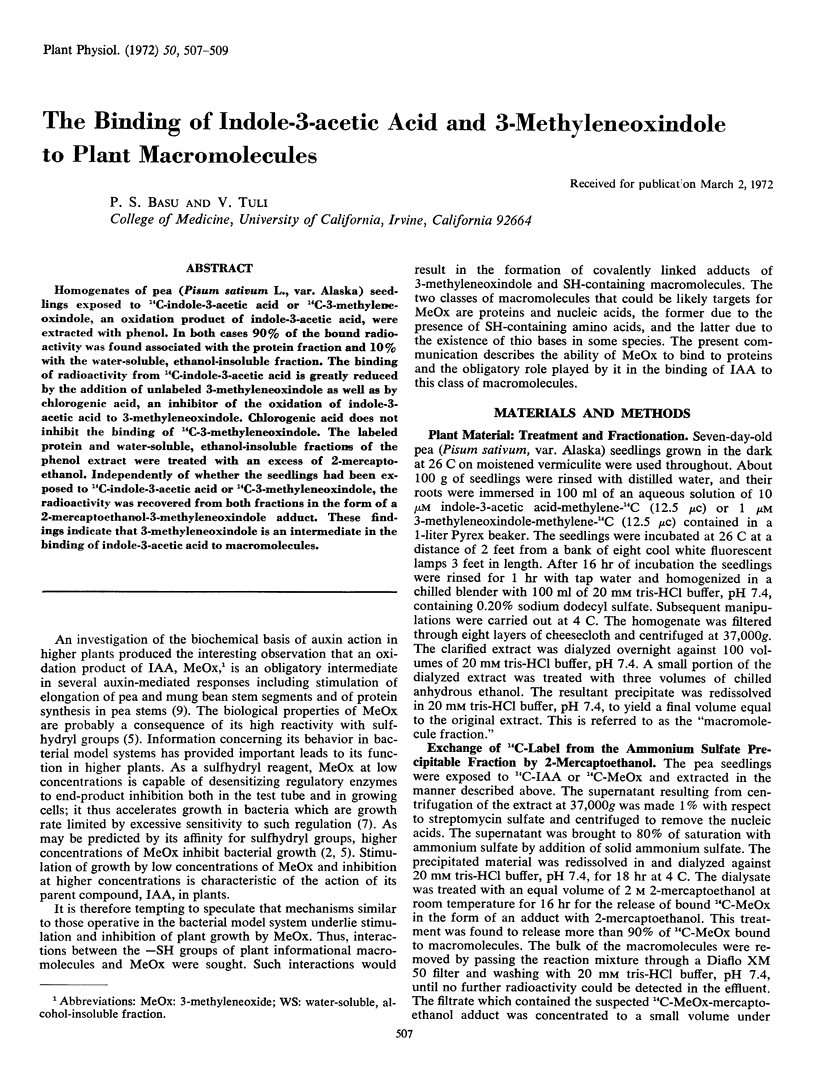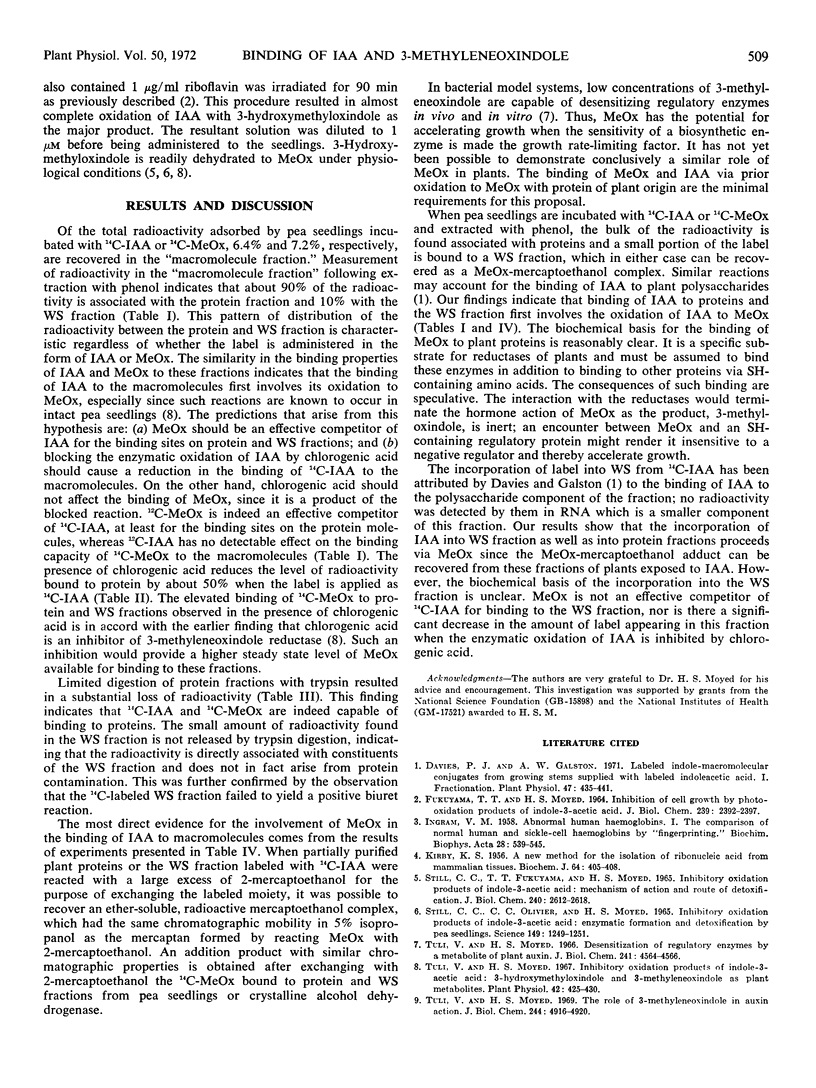Abstract
Homogenates of pea (Pisum sativum L., var. Alaska) seedlings exposed to 14C-indole-3-acetic acid or 14C-3-methyleneoxindole, an oxidation product of indole-3-acetic acid, were extracted with phenol. In both cases 90% of the bound radioactivity was found associated with the protein fraction and 10% with the water-soluble, ethanol-insoluble fraction. The binding of radioactivity from 14C-indole-3-acetic acid is greatly reduced by the addition of unlabeled 3-methyleneoxindole as well as by chlorogenic acid, an inhibitor of the oxidation of indole-3-acetic acid to 3-methyleneoxindole. Chlorogenic acid does not inhibit the binding of 14C-3-methyleneoxindole. The labeled protein and water-soluble, ethanol-insoluble fractions of the phenol extract were treated with an excess of 2-mercaptoethanol. Independently of whether the seedlings had been exposed to 14C-indole-3-acetic acid or 14C-3-methyleneoxindole, the radioactivity was recovered from both fractions in the form of a 2-mercaptoethanol-3-methyleneoxindole adduct. These findings indicate that 3-methyleneoxindole is an intermediate in the binding of indole-3-acetic acid to macromolecules.
Full text
PDF


Selected References
These references are in PubMed. This may not be the complete list of references from this article.
- Davies P. J., Galston A. W. Labeled indole-macromolecular conjugates from growing stems supplied with labeled indoleacetic Acid : I. Fractionation. Plant Physiol. 1971 Mar;47(3):435–441. doi: 10.1104/pp.47.3.435. [DOI] [PMC free article] [PubMed] [Google Scholar]
- FUKUYAMA T. T., MOYED H. S. INHIBITION OF CELL GROWTH BY PHOTOOXIDATION PRODUCTS OF INDOLE-3-ACETIC ACID. J Biol Chem. 1964 Jul;239:2392–2397. [PubMed] [Google Scholar]
- INGRAM V. M. Abnormal human haemoglobins. I. The comparison of normal human and sickle-cell haemoglobins by fingerprinting. Biochim Biophys Acta. 1958 Jun;28(3):539–545. doi: 10.1016/0006-3002(58)90516-x. [DOI] [PubMed] [Google Scholar]
- KIRBY K. S. A new method for the isolation of ribonucleic acids from mammalian tissues. Biochem J. 1956 Nov;64(3):405–408. doi: 10.1042/bj0640405. [DOI] [PMC free article] [PubMed] [Google Scholar]
- STILL C. C., FUKUYAMA T. T., MOYED H. S. INHIBITORY OXIDATION PRODUCTS OF INDOLE-3-ACETIC ACID. MECHANISM OF ACTION AND ROUTE OF DETOXIFICATION. J Biol Chem. 1965 Jun;240:2612–2618. [PubMed] [Google Scholar]
- Still C. C., Olivier C. C., Moyed H. S. Inhibitory oxidation products of indole-3-acetic acid: enzymic formation and detoxification by pea seedlings. Science. 1965 Sep 10;149(3689):1249–1251. doi: 10.1126/science.149.3689.1249. [DOI] [PubMed] [Google Scholar]
- Tuli V., Moyed H. S. Desensitization of regulatory enzymes by a metabolite of plant auxin. J Biol Chem. 1966 Oct 10;241(19):4564–4566. [PubMed] [Google Scholar]
- Tuli V., Moyed H. S. Inhibitory oxidation products of indole-3-acetic Acid: 3-hydroxymethyloxindole and 3-methyleneoxindole as plant metabolites. Plant Physiol. 1967 Mar;42(3):425–430. doi: 10.1104/pp.42.3.425. [DOI] [PMC free article] [PubMed] [Google Scholar]
- Tuli V., Moyed H. S. The role of 3-methyleneoxindole in auxin action. J Biol Chem. 1969 Sep 25;244(18):4916–4920. [PubMed] [Google Scholar]


